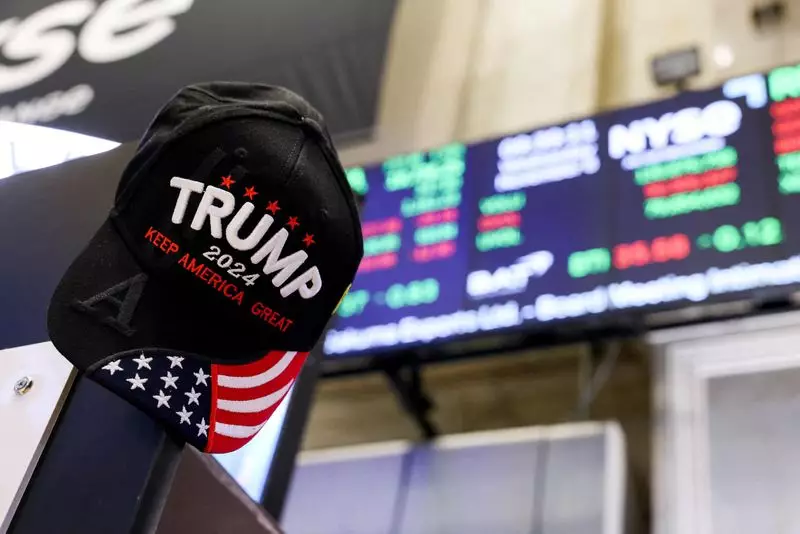As global investors increasingly turn their attention toward stock markets, the U.S. has emerged as a beacon of opportunity in recent years. With the S&P 500 firmly establishing itself as a leader, rising over 24% in 2024 alone, the disparity between U.S. stocks and their international counterparts has never been more pronounced. This article delves into the factors contributing to the U.S. stock market’s impressive performance, particularly in the context of prospective economic policies under the new presidential administration.
Valuation Metrics: A New Financial Landscape
The valuation of the S&P 500 has reached an intriguing juncture, boasting a premium of 22 times expected future earnings, a level not seen in more than two decades. This valuation contrasts sharply with the MSCI index, which spans over 40 other countries, indicating a widening gap. Investors find themselves reassessing their strategies, particularly since U.S. stocks have consistently outperformed global benchmarks over the past decade. This performance dichotomy is primarily fueled by robust economic growth and surging corporate earnings, especially within the technology sector, where advancements in artificial intelligence have piqued investor interest and led to significant gains for key players like Nvidia.
Following the recent election results, a clear bias towards U.S. equities became evident. Significant capital flowed into U.S. equity funds—over $80 billion in just one week—while European and emerging market funds experienced withdrawals. This shift illustrates a growing belief among investors that President-elect Donald Trump’s economic agenda, characterized by tax cuts and deregulation, could stimulate further growth in U.S. markets. Financial experts are notably bullish, advising an overweighting in U.S. equities for portfolios designed to outperform in the near term.
Corporate earnings form the backbone of the U.S. stock market’s current dominance. Expectations for S&P 500 company earnings growth are impressive, with predictions of a 9.9% increase for this year and 14.2% for 2025. By comparison, European firms within the Stoxx 600 index are projected to see meager earnings growth of just 1.8% in 2024, illustrating how U.S. companies are maintaining a competitive advantage in profitability and growth potential. The formidable presence of major tech companies—Nvidia, Apple, Microsoft, Amazon, and Alphabet—which collectively have a market valuation exceeding $14 trillion, underscores this trend, dwarfing the total market cap of the entire Stoxx 600.
Economic Outlook: Assessing the Risks and Rewards
Despite the prevailing optimism, significant risks lurk beneath the surface. Trump’s plans for imposing tariffs might provide a temporary competitive boost to U.S. industries but also introduce the potential for retaliatory measures from trading partners. This speculation has raised concerns about how such a scenario could impact domestic growth and overall market stability. While Deutsche Bank recently adjusted its growth forecasts for the U.S. upward due to Republican control in Washington, it remains essential to consider the conservative nature of Congress and potential market backlash against extreme policies.
Market Projections: Balancing Growth with Caution
Looking forward, analysts maintain a cautiously optimistic stance on the S&P 500, predicting it could surge to around 6,600 by 2025, driven by continued advancements in innovation, tax reforms, and favorable regulatory conditions. Nonetheless, an outright trade war could trigger significant volatility, as retaliatory tariffs would likely stifle growth, potentially driving the index down to 5,100. These conflicting potential outcomes highlight the delicate balance investors must navigate as they consider both the opportunities and the pitfalls inherent to the current U.S. market landscape.
The U.S. stock market continues to provide investors with a compelling mix of risks and rewards as it capitalizes on strong earnings and favorable economic conditions. While the long-term trend appears to favor U.S. equities—with over 180% growth against a 50% increase in Europe’s STOXX over the past decade—investors must remain vigilant of the risks associated with aggressive policies and potential international repercussions. As market dynamics evolve, the critical question remains: will U.S. stocks maintain their leadership, or will caution prompt a reevaluation of global strategies? The path forward is fraught with uncertainty but ripe with opportunities for those willing to adapt.

